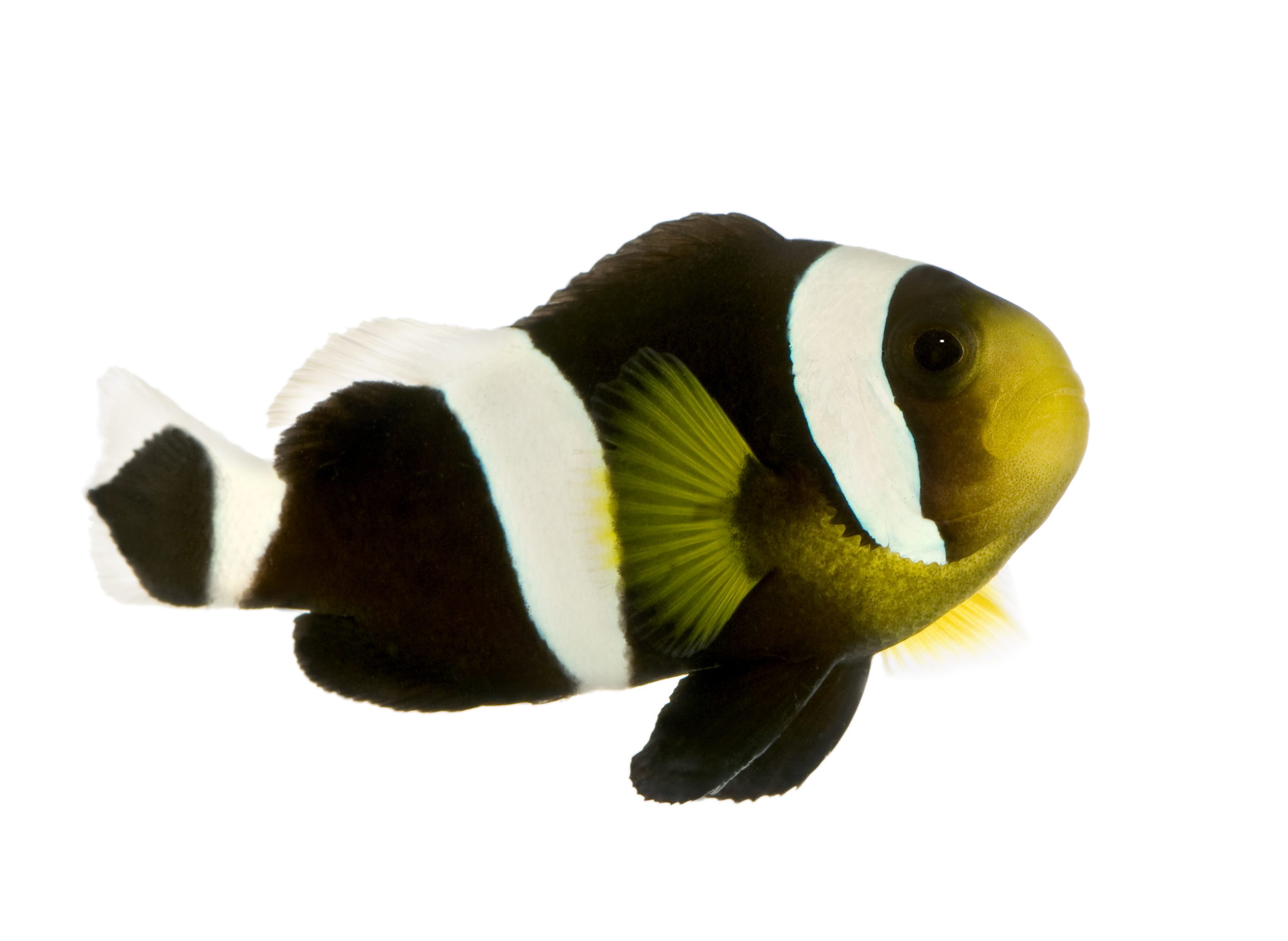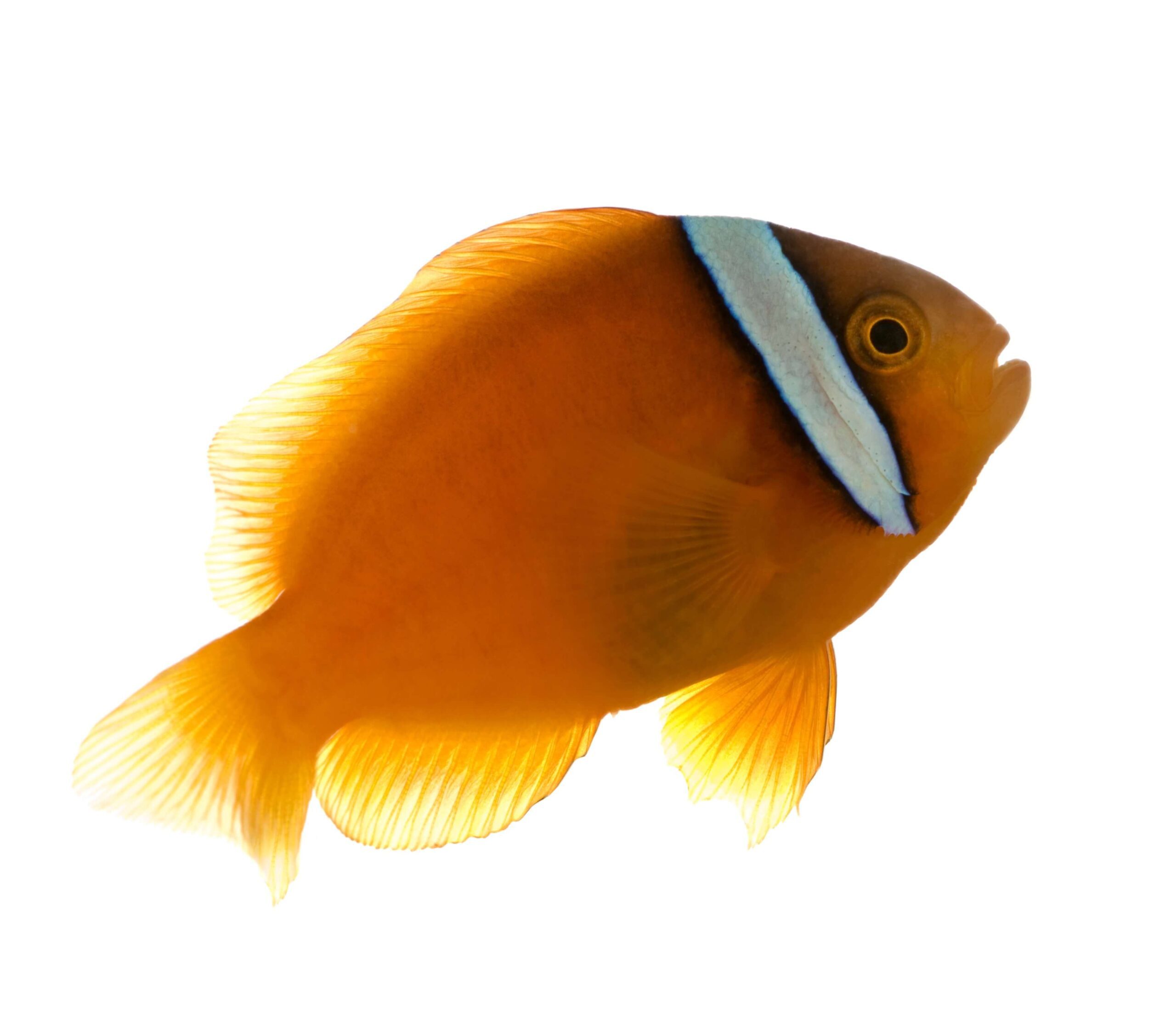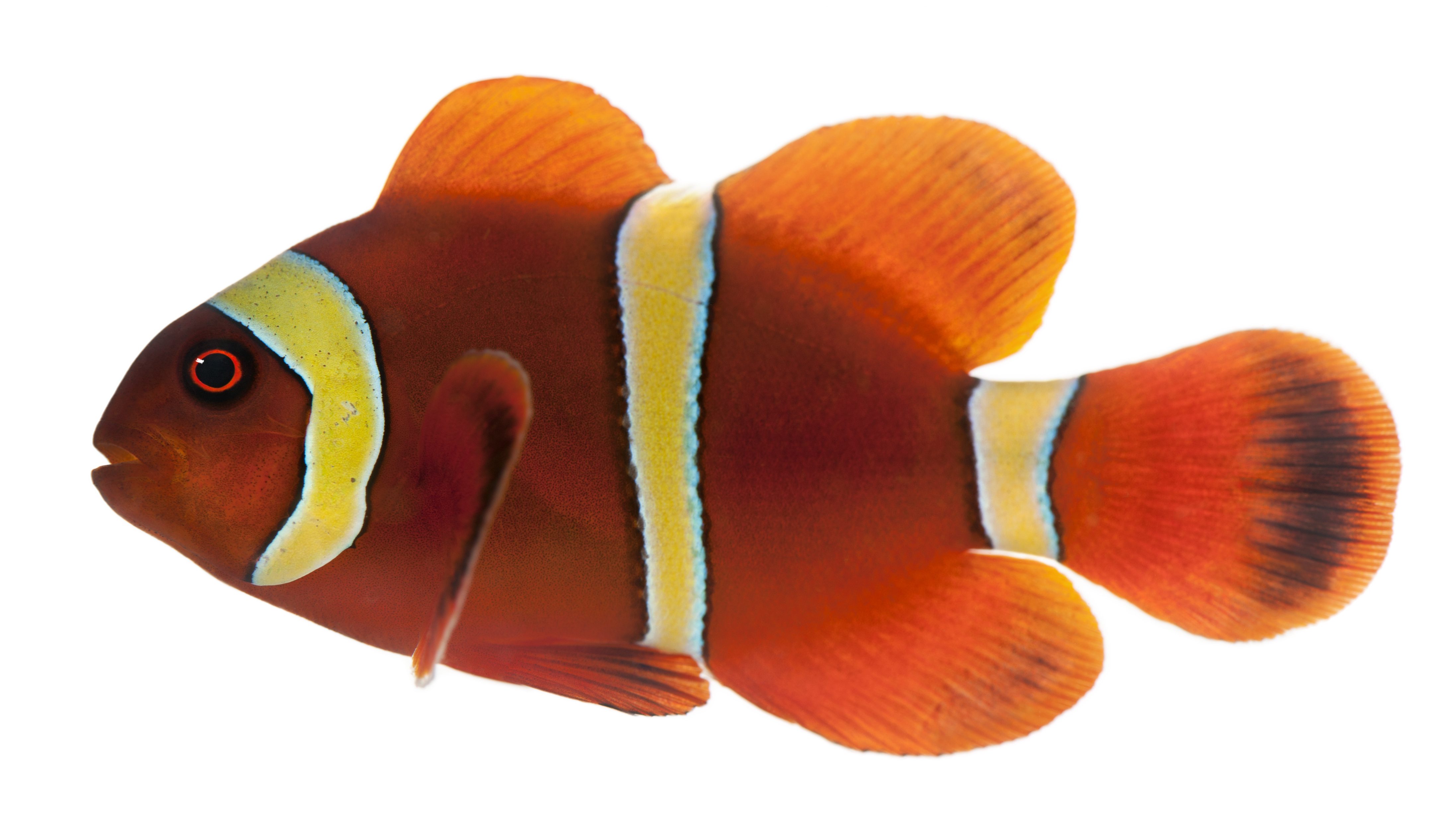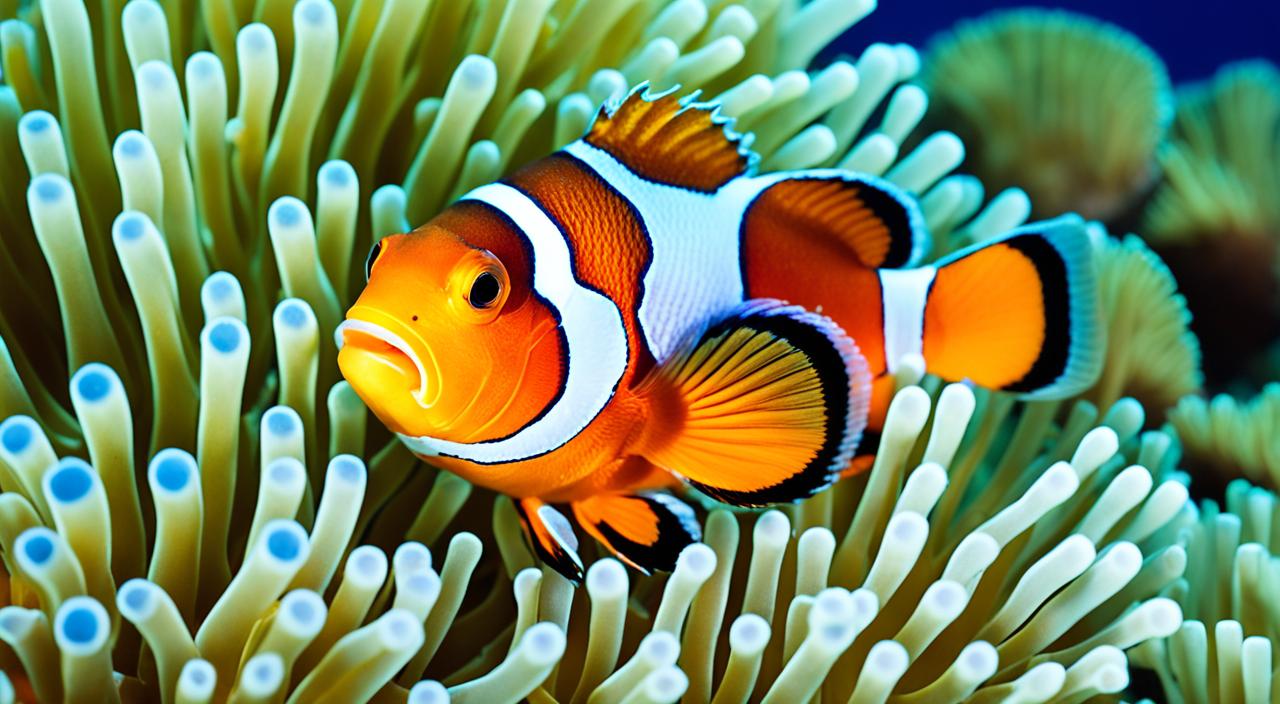Welcome to my article on the Saddleback Clownfish, also known as Amphiprion polymnus. If you are a marine aquarium enthusiast or are interested in tropical reef fish, this is the perfect species for you. The Saddleback Clownfish is beautiful and fascinating in its behaviour, symbiotic relationships, and conservation status. This article will explore everything you need to know about caring for this species in a saltwater fish tank, including its anemone symbiosis and breeding habits. So, let’s dive in!
Key Takeaways:
- The Saddleback Clownfish, or Amphiprion polymnus, is a black and white species of anemonefish in the Indo-Pacific region.
- It forms a symbiotic relationship with specific host anemones, allowing it to be unaffected by their stinging tentacles.
- This species exhibits protandry, meaning the breeding male can change to female if the breeding female dies.
- The Saddleback Clownfish is omnivorous and feeds on zooplankton, small crustaceans, and algae.
- While it is considered the most minor concern regarding conservation status, collection for the marine aquarium trade and bleaching pose threats to its populations.
Description and Color Variations of the Saddleback Clownfish
The Saddleback Clownfish, scientifically known as Amphiprion polymers, is a small-sized fish that typically reaches a length of about 13 centimetres. What sets the Saddleback Clownfish apart from other anemonefish species is the relatively equal size of the male and female individuals. It showcases a stocky, oval-shaped body and exhibits striking colour variations ranging from dark brown to yellow-orange.
The defining characteristic of the Saddleback Clownfish is the presence of two or three distinctive white bars. This includes a thick white bar behind the eyes, resembling a head bar, and a saddle-like white bar extending across the middle of its body. Some species variations may also feature a white bar on the caudal peduncle and a third white bar or margin on the dorsal fin. It’s important to note that colour variations can occur depending on the specific host anemone species and the surrounding environment. Notably, individuals associated with the Heteractis crispa anemone tend to exhibit darker shades than those associated with the Stichodactyla haddoni anemone.
| Characteristic | Description |
|---|---|
| Species | Saddleback Clownfish (Amphiprion polymnus) |
| Size | Up to 13 centimeters |
| Colour Variations | Colour |
| Distinctive Features | Thick white head bar, saddle-like white bar on the body |
| Variations | The white bar on caudal peduncle, additional white bar or margin on the dorsal fin |
| Color Variations | Dependent on host anemone species and environment |
The visually striking appearance of the Saddleback Clownfish, with its unique colour patterns and distinctive bars, makes it a captivating addition to any marine aquarium. The natural beauty of this species is further complemented by its fascinating behaviour, which will be explored in the next section.
Habitat and Behavior of the Saddleback Clownfish
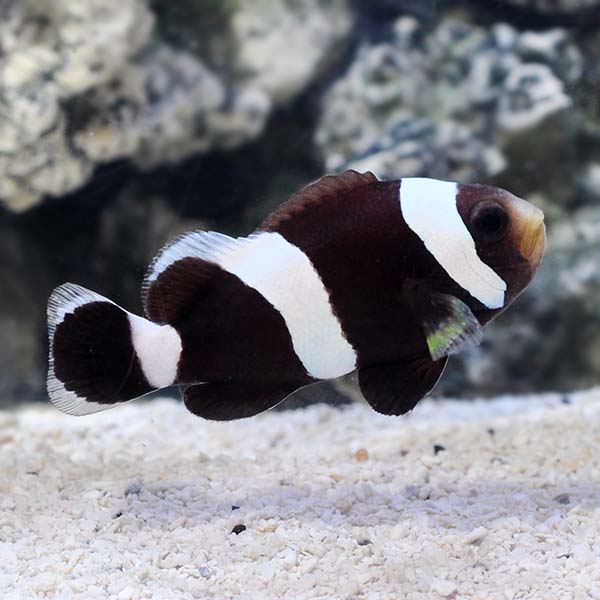
The Saddleback Clownfish, scientifically known as Amphiprion polymnus, flourishes in the central Indo-Pacific region, commonly called the Coral Triangle. Its natural habitat includes the Philippines, Indonesia, New Guinea, northern Australia, Melanesia, and parts of southern Japan. This vibrant species of Clownfish inhabits silty lagoons and harbour areas, preferring depths ranging from 2 to 30 meters.
The Saddleback Clownfish has an extraordinary symbiotic relationship with specific host anemones, primarily Heteractis crispa and Stichodactyla haddoni. During the day, they exhibit diurnal behaviour, remaining active and exploring their surroundings. These territorial creatures rely on their host anemones for shelter and protection.
One fascinating aspect of the Saddleback Clownfish’s behaviour is its ability to defend the host anemone against other reef fishes, safeguarding its territory. However, the Saddleback Clownfish becomes vulnerable to predation if its anemone buries itself in the sand.
This captivating species is curious and active, making it a delight for observers. With its beautiful colour variations and captivating behaviour, the Saddleback Clownfish is an enchanting addition to any marine aquarium.
Conservation and Aquarium Care of the Saddleback Clownfish
The Saddleback Clownfish, also known as Amphiprion polymnus, is currently listed as least concern on the IUCN Red List. However, it still faces threats from the collection for the marine aquarium trade and bleaching events that affect its host anemones. Proper aquarium care is essential to ensure this beautiful species’ well-being.
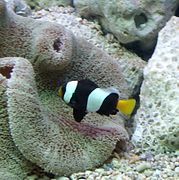
When keeping the Saddleback Clownfish in an aquarium, it is essential to provide suitable conditions that mimic its natural habitat. This includes offering adequate hiding places such as caves or live rock, which allow the clownfish to establish territories and feel secure. Recreating this environment can help reduce stress and improve overall health.
Water quality is crucial for the Saddleback Clownfish, as it is known to be touchier than other clownfish species. Monitoring and maintaining water parameters such as temperature, salinity, and pH are essential for its well-being. Ensuring proper filtration and oxygenation will also contribute to a healthy aquatic environment.
Diet plays a vital role in the care of the Saddleback Clownfish. A diverse diet of zooplankton, small crustaceans, and algae is essential for meeting its nutritional needs. This can be achieved through commercially available fish, live or frozen foods, and occasional vegetable matter.
When selecting tank mates for the Saddleback Clownfish, caution should be exercised to ensure compatibility with other peaceful fish species and invertebrates. Avoid housing them with aggressive or territorial species that may pose a threat. Researching and observing the behaviour of potential tank mates is crucial to prevent any conflicts.
Overall, by providing proper care and suitable conditions, you can enjoy the beauty of the Saddleback Clownfish while contributing to its conservation. Supporting responsible sourcing practices, such as obtaining captive-bred specimens, further promotes the sustainability of the aquarium trade.
| Conservation Status | Threats |
|---|---|
| Least Concern (IUCN Red List) | Collection for the marine aquarium trade Bleaching events affecting host anemones |
Advantages of Choosing Saddleback Clownfish from Saltwaterfish.com
If you’re a marine aquarium enthusiast looking for a stunning addition to your tank, the Saddleback Clownfish (Amphiprion polymnus) is an excellent choice. And when it comes to sourcing these captivating creatures, Saltwaterfish.com is the go-to supplier for high-quality marine specimens.
Saltwaterfish.com is committed to providing its customers with top-notch captive-bred Saddleback Clownfish known for their hardiness and adaptability to aquarium conditions. Whether you’re a beginner or an experienced hobbyist, these farmed specimens are guaranteed to thrive in your tank, adding a splash of colour and life to your aquatic world.
By choosing Saltwaterfish.com as your supplier, you gain access to healthy and well-acclimated Saddleback Clownfish and support sustainable practices in the aquarium trade. The company works with reputable suppliers, ensuring that the fish they offer are responsibly sourced and cared for.
Furthermore, Saltwaterfish.com boasts an impressive selection of marine species, making it easier to find the perfect Saddleback Clownfish for your aquarium. With their wide variety of options, you can rest assured that you’ll find the suitable specimen that meets your preferences and requirements.
FAQ
What is the scientific name of the Saddleback Clownfish?
The scientific name of the Saddleback Clownfish is Amphiprion polymnus.
What is the typical size of a Saddleback Clownfish?
The Saddleback Clownfish grows up to 13 centimeters in length.
How does the Saddleback Clownfish differ from other anemonefish species?
Unlike other anemonefish species, the male Saddleback Clownfish is almost equal in size to the female.
What are the color variations of the Saddleback Clownfish?
The Saddleback Clownfish can vary in color from dark brown to yellow orange, with distinctive white bars on its body.
Where is the Saddleback Clownfish found?
The Saddleback Clownfish is found in the central Indo-Pacific region, primarily in the Coral Triangle.
What is the habitat of the Saddleback Clownfish?
The Saddleback Clownfish inhabits silty lagoons and harbor areas, typically at depths ranging from 2 to 30 meters.
What is the behavior of the Saddleback Clownfish?
The Saddleback Clownfish is diurnal, active during the day, and exhibits territorial behavior.
What threats does the Saddleback Clownfish face in terms of conservation?
The Saddleback Clownfish faces threats from collection for the marine aquarium trade and bleaching events affecting its host anemones.
Can the Saddleback Clownfish be bred in captivity?
Yes, the Saddleback Clownfish can be bred in captivity with proper care and suitable conditions.
What should be considered when caring for the Saddleback Clownfish in an aquarium?
It is important to provide hiding places, maintain water quality, reduce stress, and offer a diverse diet for the Saddleback Clownfish in an aquarium.
Why is Saltwaterfish.com a good source for Saddleback Clownfish?
Saltwaterfish.com offers high-quality, captive-bred Saddleback Clownfish and supports sustainable practices in the aquarium trade.

